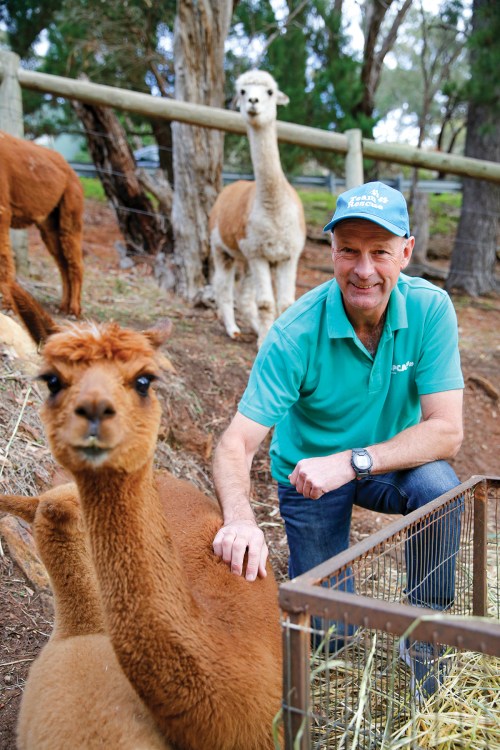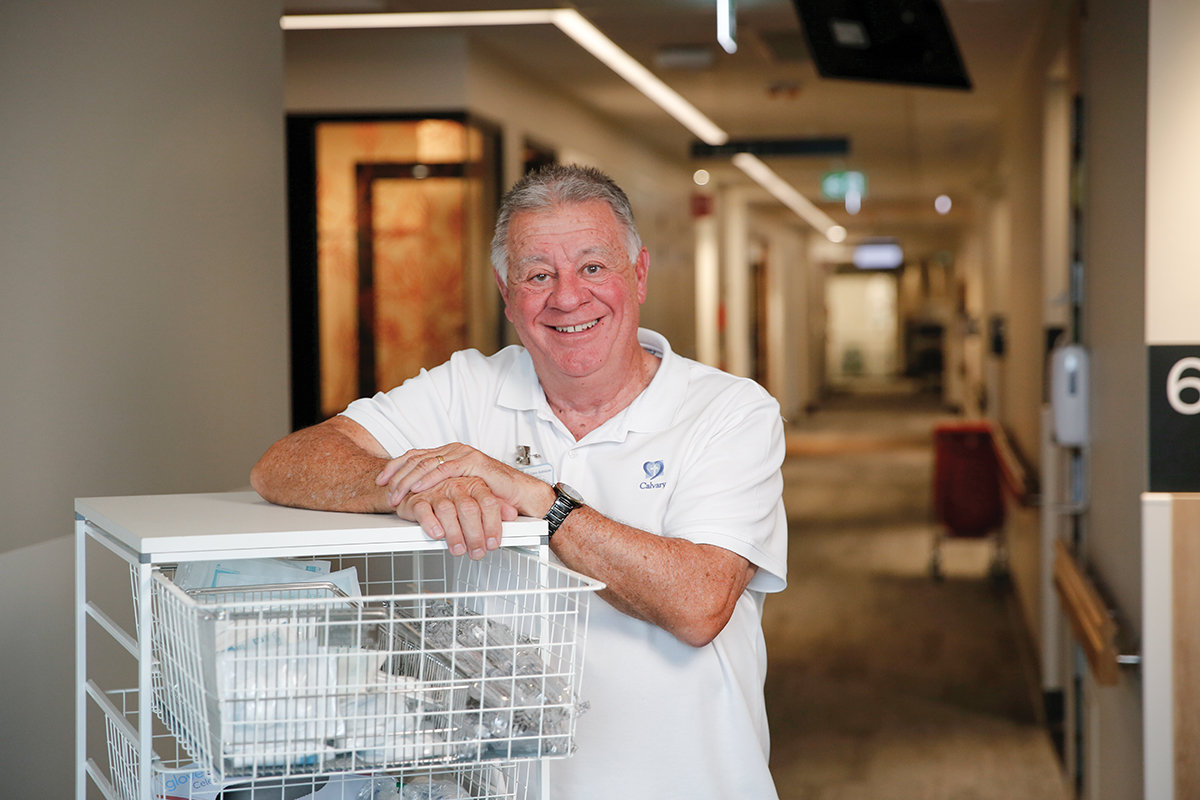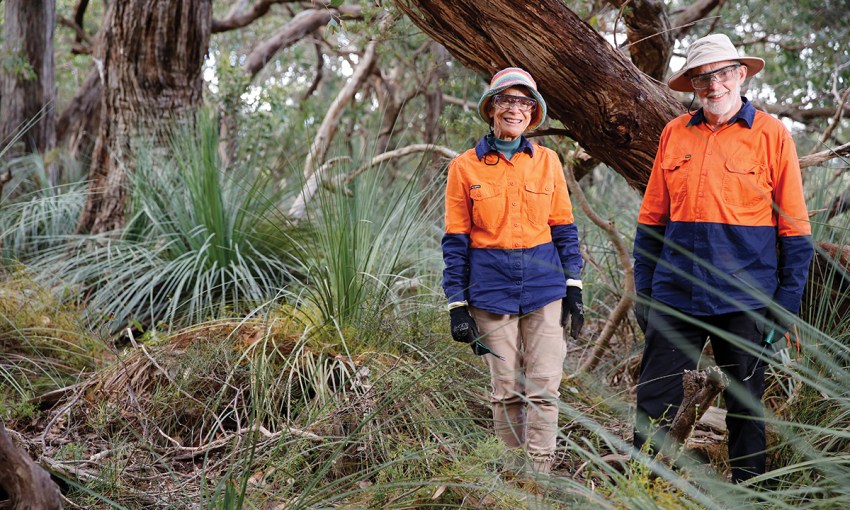While volunteering might be a selfless act, these unsung heroes show that giving your time can deliver rewards that far outweigh the time invested.
Volunteering in SA: Time to give back
Fighting the good fight
Lynne and Ian Norman’s well-trained eyes are on the lookout for invaders as they nimbly weave through the undergrowth of native bushland armed with hand-weeding tools, gloves and safety goggles. The retired school teachers are volunteer Bushcarers who have adopted two Bush for Life sites at Willunga Hill, where they spend about 10 hours each month fighting back invasive species.
“A lot of the work is essentially removing weeds in various ways, shapes and forms,” says Ian.
“It is a commitment, but it’s a chance to give back and it allows you to see the progress, which comes with great satisfaction. We love being outdoors in nature and doing what we can to help the environment.”
The couple has grown seedlings for Trees for Life for the past 30 years and became involved in the Bush for Life program soon after they retired in 2013, taking custodianship of two parcels of remnant native vegetation totalling almost five hectares. They have been trained in general botany and local flora to distinguish weeds from native grasses.
“There’s a certain level of fitness involved, too,” says Lynn. “We also enjoy going bushwalking, but it has spoilt our walks in a way, because now we notice all of the weeds.”
Lynne says caring for their allocated sites gives her a sense of contribution. “Otherwise, you just feel helpless to see it all disappearing; you’ve got to be doing something. The native veg is shrinking and the habitat is so important to keep nature ticking along,” she says.
Nature is winning the battle across a large portion of their site, with species such as the striking xanthorrhoea having grown so dense that weeds simply can’t take hold.
A rewarding perk of the role is spending time amongst spectacular bushland with sightings of koalas and the yellow-tailed black cockatoos that feed on the banksias.
“We like to keep busy and active,” says Lynne. “I can’t understand people who say they don’t want to retire because they don’t know what they’d do with themselves. I ended up retiring a little earlier because I wanted to do so many things like this and I didn’t want to miss out.”

All creatures great and small
On a sweltering January afternoon earlier this year, the RSPCA’s rescue team received a call from a distressed family member who needed 261 animals collected from a deceased relative’s backyard.
Rescue team volunteer Peter Norman found himself in the thick of it as he helped the team collect an assortment of animals including a bull terrier, 71 pigeons, 33 chickens, 28 ducks and 16 quail – to name a few.
After the rescue, Peter adopted a dozen quail to his Hills property, where he and wife Hannah Tayler also keep alpacas.
It was first fostering cats and kittens that kick-started Peter’s interest in volunteering with the RSPCA’s rescue team last year.
“We had been fostering for the RSPCA for about four years when I heard they were looking for ambulance drivers for the rescue team. I’m quite enjoying it; it’s really interesting,” Peter says.
“Having worked in IT and project management for 35 years, where everything is very structured, this is great because you have absolutely no idea what’s going to happen on your rostered day.”
Peter has found himself crawling along the ground with a riot shield to protect himself from birds, pulling blue-tongued lizards out of drains, looking for kittens stuck in walls and pursuing notoriously hard-to-catch animals such as foxes, ducks and pelicans.
By volunteering, Peter provides much-needed support for the RSPCA’s full-time rescue officers.
“They are the real heroes and the way they go about their work is absolutely fantastic. I’m really impressed by what they do. They’re incredibly committed and always good-natured and good-humoured, despite the things that they have to go through sometimes,” says Peter.
Because of the amount of training required to prepare a rescue team volunteer, individuals must commit to volunteer once a week for at least six months.
“You also have to be resilient, because often the animals that you’re picking up have been injured or perhaps mistreated in some way. Sometimes you just have to accept what’s going to happen to them,” says Peter.
“Volunteering with a not-for-profit organisation is an opportunity to contribute, because they’re doing the best they can with the resources and facilities that they have available.”

A helping hand
David Langman knows better than most how important nursing staff are to the running of a hospital. His mother was a senior nurse and David himself has undergone several procedures where he was in awe of the care provided by medical professionals.
So, when he retired, the opportunity to volunteer one day each week at Calvary Adelaide Hospital was something he felt he needed to do.
“I’ve got set duties: make sure the papers are delivered each morning, run errands and fill up the rooms with the stock that the staff use on a daily basis,” says David.
“I also make sure the nursing staff are fed and watered; just little things to make their lives a bit easier. If they want a blanket or a coffee, I’ll get it for them.
“The carers are a very important cog in the machine, because without them the patients have nothing. I like to have a chat with them, make sure they’re okay. They like to tell me about their family lives and it’s very rewarding just to listen. It’s an enjoyable day and it goes very quickly.”
While his primary role is to see to duties around the ward, he is also a friendly face for patients who are admitted for various procedures, which can be a confronting experience. “They might be going in for a major heart operation and you can see that they’re a bit anxious. To make them feel a little more at ease, I sit down with them and talk them through that they’re in good hands and they’ve got experts looking after them,” he says.
“I might spend an hour with a patient if they haven’t had any visitors for the day, listening to them as they unload the weight off their shoulders.”
David has always been community minded, particularly through his local football club, but retirement has allowed him to give in a more rewarding way. He’s certainly not one to sit around idly and his smartphone tells him he usually walks six kilometres on days he volunteers at Calvary.
“You do get the highs and lows, so you’ve got to have broad shoulders and the desire to give,” he says.
This story first appeared in the July 2021 issue of SALIFE magazine.



